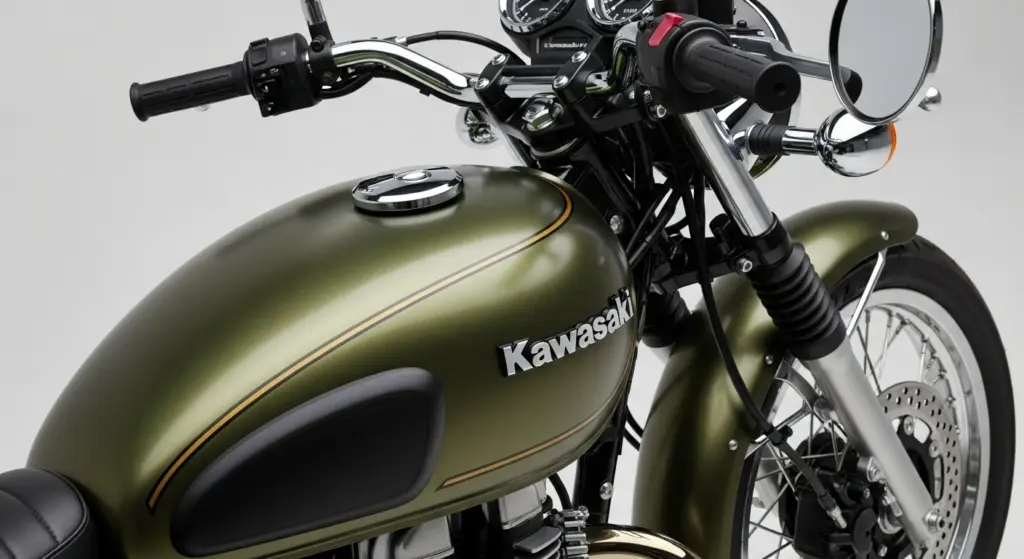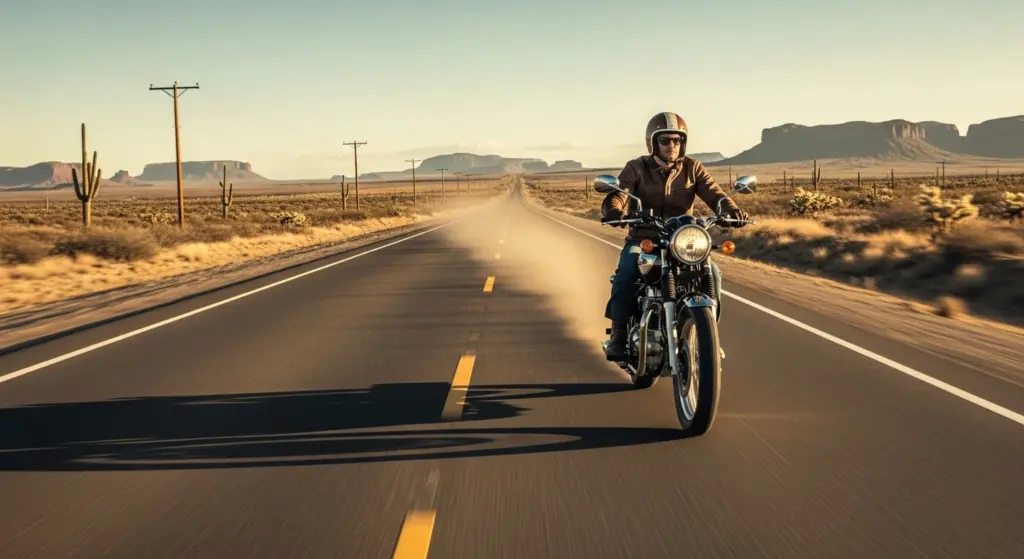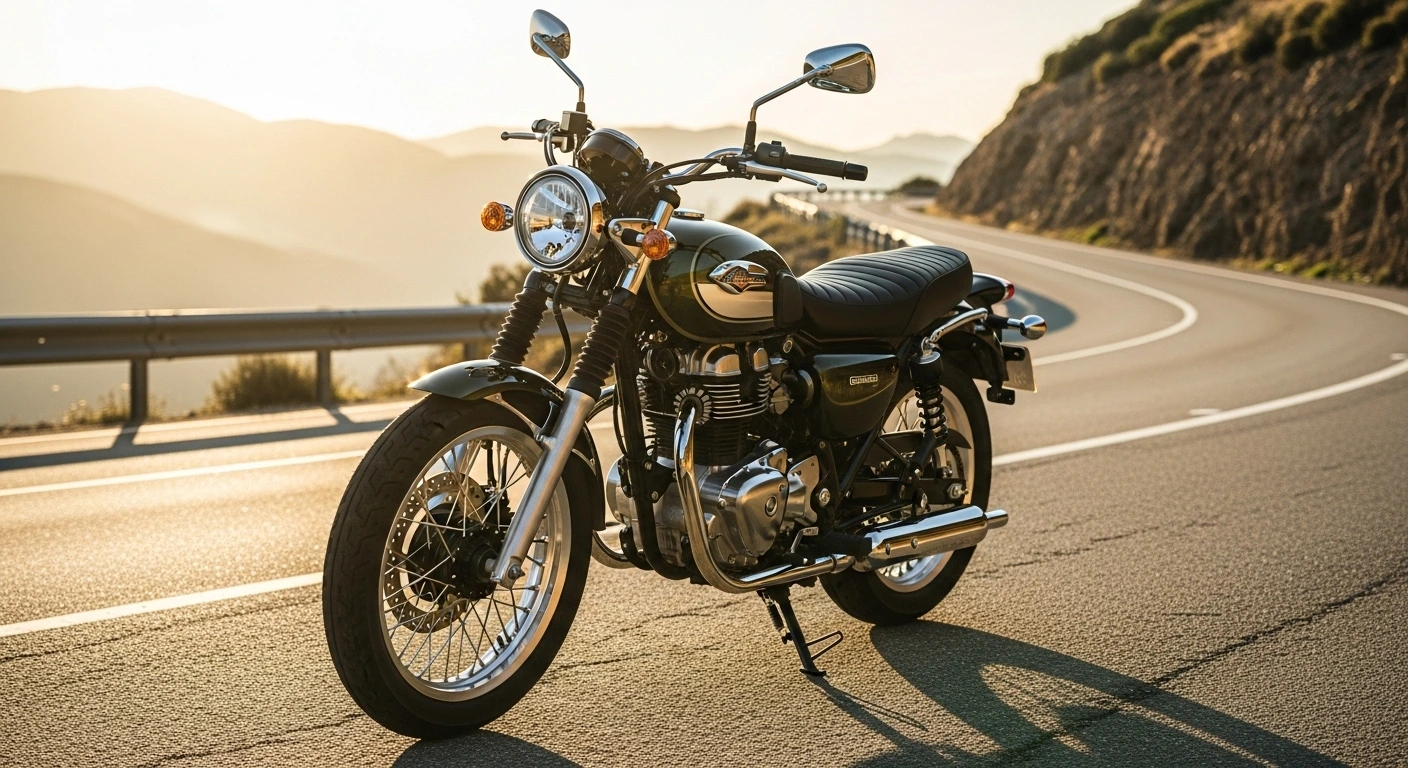When it comes to retro-styled, heritage-classic bikes, few names stir nostalgia like Kawasaki’s W series. In mid-2025, Kawasaki made waves by confirming that the W230 would stay in the 2026 lineup — complete with a fresh Metallic Matte Dark Green finish. This matters for U.S. riders because it shows Kawasaki is committing to affordable, style-driven bikes, not just bigger flagship models.
In an era where EVs, cruiser trends, and high-power machines dominate the spotlight, the W230 offers something different: purity of design, manageable displacement, and an accessible entry into retro motorcycling. For new riders or those wanting a secondary ride, this update signals relevance and endurance.
What Kawasaki Has Confirmed & What’s New
Kawasaki Europe announced that both the W230 and Meguro S1 will continue into the 2026 range, with the W230 getting a new Metallic Matte Dark Green color scheme. The announcement shows confidence in the W230’s market potential and keeps fans excited about subtle updates rather than full overhauls.
No major mechanical changes were reported — the frame, engine, and core design remain consistent with the 2025 model.This continuity suggests Kawasaki is banking on design tweaks (color and finish), loyalty, and the W230’s existing strengths.
That said, the new livery gives it fresh shelf appeal in showrooms, especially in areas where retro styling trends are strong (California, Pacific Northwest, Northeast). For U.S. distributors, that means promotional opportunities and renewed attention.
Technical Specs & Riding Feel

Below is the spec sheet for the W230 (2025, continuing into 2026) — with insight about what those numbers mean in day-to-day use:
Also take a look at this topic: Moto Morini’s Calibro 700 Bagger Is America’s Next Affordable Touring Star
| Spec | Value / Detail | Real-Life Impact |
|---|---|---|
| Engine | 233 cc, air-cooled, SOHC single | Enough for city streets and light highway runs |
| Power / Torque | ~17 hp (12.7 kW) @ 7,500 rpm, 14 lb-ft (19 N·m) @ 5,800 rpm | Modest power — ideal for relaxed riding, not aggressive moves |
| Transmission | 6-speed, chain final drive | Standard setup — familiar for most riders |
| Brakes | Single 265 mm front / 220 mm rear with dual-channel ABS | Safety for everyday riding |
| Suspension | 37 mm telescopic fork (non-adjustable) / twin shocks (5-step preload) | Basic but functional for urban roads |
| Tires & Wheels | 90/90-18 front, 110/90-17 rear, spoked wheels | Retro style, forgiving on uneven pavement |
| Seat Height | 29.3 in (745 mm) | Very accessible for shorter riders |
| Weight | Wet ~315 lb (143 kg) | Lightweight handling, easy maneuvering |
| Fuel Capacity | ~3.1–3.2 gal (12L) | Okay for city and short touring runs |
| Price (MSRP) | ~$5,599 USD for the 2025 model | Excellent entry-level positioning |
What That Means in Practice:
- The W230 is not built for high-speed highway dominance, but is very capable for commuting, backroads, and light touring.
- Its low seat height and light weight make it an ideal “first bike” for newer riders.
- Features like ABS add confidence, though performance expectations should remain modest.
How W230 Compares & Where It Stands

Compared to Retro & Entry Bikes
The W230 competes in a segment filled with Royal Enfield Classic series, Honda CB300 family, and smaller retro offerings. Its styling, lightweight frame, and brand backing give it differentiation. Some reviewers suggest its pricing feels ambitious versus competitors.
Versus Previous W Series Models
The W230 is the “baby W” in Kawasaki’s W line — sitting below the W800 in terms of displacement. It carries classic W-series design cues (teardrop fuel tank, wire wheels, chrome fenders) into a modern, entry-level context.
Kawasaki’s commitment to it for 2026 extends the lineage, rather than retiring it after one year — giving buyers confidence that it’s not a fleeting experiment.
Challenges & U.S. Market Watch Points
- Power expectations vs. reality: Some riders may outgrow the 233cc power envelope rather quickly. A handful of reviewers note its engine feels underpowered on freeway speeds.
- Pricing edge: At $5,599 MSRP, the W230 is attractively priced — but by the time dealer markups and local costs hit, it could lose competitiveness.
- Parts, service & rollout: U.S. adoption depends on Kawasaki ensuring dealers stock parts, service kits, and marketing support. Without that, interest may fade.
- Appeal retention: As it ages without larger updates, the W230 must rely on style, simplicity, and charm — but its fans expect at least minor tweaks or editions over time.
Signals to monitor: new color announcements beyond matte green, U.S. arrival and availability, user reviews from U.S. demo fleets, event displays or shows featuring the 2026 model.
Also take a look at this topic: Audi Drops the Four-Cylinder: 2026 A6 Becomes All-V6 in U.S
Conclusion
Kawasaki’s decision to carry the W230 into the 2026 lineup reflects confidence in the retro-styled entry-level segment. With its new Matte Dark Green shade and continued classic appeal, the W230 remains a compelling option for new riders, city commuters, and enthusiasts of handsome simplicity.
For those looking for a light, low-seated, beautiful bike with minimal distractions, the W230 still fills a niche. Its modest power and basic suspension aren’t for everyone — but as a platform for growth, customization, and fun two-wheeled experiences, it’s poised to stay relevant.

